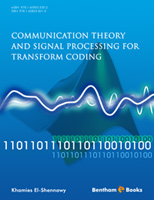Context of ebook topic
The doubling of number of transistors in integrated circuits every two years, as stipulated by
Moore’s law, has been the driving force for the huge development of microelectronics
industry in the past 50 years. The Moore’s law has enabled the enhancement of complexity
and density of planar integrated circuits in 2D of all functions on a single chip, resulting in the
emergence of real system-on-chip (SOC). On the other hand, the integration of all these
functions can be achieved through 3D integration. There are basically three types of 3D
integration levels i.e. 3D IC packaging, 3D IC integration, and, 3D Si integration. These
schemes are mostly different because the TSV (through-silicon via) applies to 3D IC and Si
integrations, but not to 3D IC packaging. The use of TSV, with the new concept in which
every chip or interposer could have two surfaces with circuits, is therefore at the heart of 3D
IC and Si integration development. Continued technology scaling together with the
integration of heterogeneous technologies on a single chip means that device performance
should continue to outperform inter-connect and packaging capabilities, which rises several
engineering challenges, such as power management, noise isolation, and intra and inter-chip
communication. 3D Si heterogeneous integration is probably the right way to go in order to
compete with Moore’s law in the frame of the so-called “more than Moore” application field.
Objective of ebook
In this ebook, Prof. C. Gontrand aims at providing a modelling synthesis of two or threedimensional circuits with emphasis on noise and parasitic accounting for substrate coupling and interconnections issues.
In chapter 1, the author underlines that, when increasing interconnect densities and rising cost
of integrated circuit (IC) manufacturing, 3D architectures for IC integration are a very promising alternative to standard 2D designs, and, that 3D technology is facing many
technological challenges, like completion of vertical interconnects (TSV) which ensure the signal transmission, bonding with alignment of functional dies and substrate thinning.
However, he is also noticing that a lot of benefits in circuit performances can be achieved by 3D integration.
In chapter 2, the author is discussing on the generation of digital parasitics, their propagation
through the substrate, and their effects on analogue devices. First, he is explaining how to
characterize the substrate noise, in the time and frequency domains, in order to identify the
major parameters that control substrate noise generation, propagation, and reception. Second,
he is investigating the noise impact on analogue circuits from a circuit-level point of view.
In chapter 3, the author is handling classical methods for noise analysis at a device point of
view. They allow identifying a set of microscopic noise sources in terms of carrier velocity
and population fluctuations - called diffusion and generation-recombination noise sources,
respectively. Then, he is evaluating the effect of microscopic fluctuations on voltage or
current fluctuations at the device terminals.
In chapter 4, the author is dealing with propagation and radiative effects, which become more
and more important in integrated circuits. Today deep submicron semiconductor devices are
operated at very high frequencies (> GHz). This is particularly important for the
characterization of interconnected structures loaded at digital and driver levels. Indeed, it is
well known that electromagnetic compatibility (EMC) and signal integrity (SI) are strongly
affected by the geometry of interconnects and by the possibly complex nonlinear/dynamic
behaviour of the electronic devices located at their terminations. At this point, the author is
undertaking a detailed semiconductor analysis based on the time-domain drift-diffusion model
(DDM) in conjunction with electromagnetic model relying on Maxwell's equations.
In the last chapter 5, the author demonstrates the effectiveness of such a modelling approach,
which is validated in a wide frequency range from DC to 20 GHz. Nevertheless, at high
frequency, he is showing that substrate-coupling effects are no more negligible and must be
included in the overall 3D system electrical description. That is why the author is eventually
proposing a substrate extraction method, based on transmission line method (TLM) or Green
functions, to model the substrate network and interconnect entanglement.
In conclusion, the ebook by Prof. C. Gontrand is very well written, has a very good content
and is very much in line with the needs for present and future interconnects and substrate
coupling effects in modern integrated circuits. I fully recommend its publication.
Reviewed by Prof. G. Ghibaudo
Director of research at CNRS (Grenoble, France)





